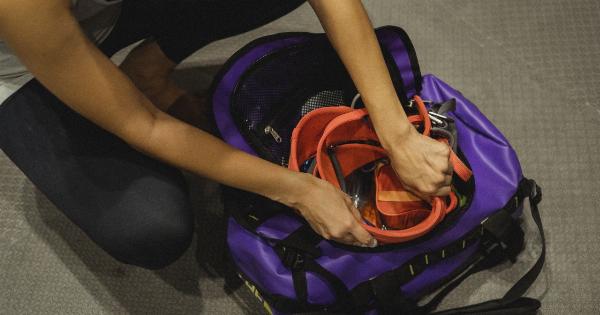A caesarean section, commonly known as C-section, is a major surgery that involves cutting through the abdominal muscles and uterus to deliver a baby. The procedure is usually done when vaginal delivery is not possible or safe for the mother or baby.
C-section recovery takes longer and requires special care compared to vaginal delivery. Here are some ways to recover quickly and comfortably after a C-section.
1. Rest and Sleep
After a C-section, your body needs time to heal and recover. Rest is essential for the body to repair and regenerate tissues. Avoid doing strenuous activities, lifting heavy objects, and driving for at least six weeks after the surgery.
Get as much sleep as possible to help your body heal and to cope with the physical and emotional demands of motherhood. Take naps when your baby is sleeping.
2. Eat Nutritious Foods
Eating a healthy, well-balanced diet is crucial for recovery after a C-section. Your body needs nutrients such as proteins, vitamins, and minerals to build and repair tissues, fight infections, and support lactation.
Eat plenty of fruits, vegetables, whole grains, lean proteins, and healthy fats. Drink lots of water and other fluids to stay hydrated. Avoid processed and junk foods that are low in nutrients and high in calories, sugar, and fat.
3. Take Your Medicines As Prescribed
After a C-section, your doctor may prescribe pain relievers, antibiotics, and other medicines to manage pain, prevent infections, and promote healing. Take your medicines as prescribed by your healthcare provider and follow the instructions carefully.
Don’t skip doses or stop taking them without your doctor’s permission. If you experience any side effects, inform your doctor immediately.
4. Use Compression Bandages or Underwear
To support your abdomen and reduce swelling and discomfort, you can use compression bandages or underwear. These garments help to hold the incision site securely and comfortably, prevent the stitches from tearing, and improve blood circulation.
You can wear them during the day and at night, but don’t wear them too tight or for too long, as they can constrict your breathing, digestion, and circulation.
5. Do Gentle Exercises and Stretching
Although you should avoid strenuous exercises for a few weeks after a C-section, gentle movements and stretching can help to prevent blood clots, improve circulation, and restore mobility and strength to your muscles and joints.
You can start doing postpartum exercises such as Kegels, pelvic tilts, deep breathing, and gentle yoga asanas, as advised by your healthcare provider. Start with short sessions and gradually increase the duration and intensity.
6. Practice Good Hygiene
Good hygiene is crucial for preventing infections and promoting healing after a C-section. Wash your hands frequently with soap and water, especially before and after touching the incision site, or changing your sanitary pad.
Keep the incision area clean and dry by gently patting it with a clean, dry towel or using a hair dryer on cool setting. Don’t use perfumes, oils, powders, or creams on the incision site, unless prescribed by your doctor.
7. Seek Help and Support
Caring for a newborn baby while recovering from a surgery can be overwhelming and exhausting. Don’t hesitate to ask for help and support from your family, friends, or healthcare providers.
They can assist you with feeding, changing, and soothing your baby, as well as with household chores, grocery shopping, and errands. Join a local support group for new moms and share your experiences, challenges, and tips.
8. Monitor Your Symptoms
After a C-section, it’s essential to monitor your symptoms and seek medical help if they worsen or persist. Some normal symptoms during recovery include mild pain, swelling, and bleeding.
However, if you experience any of these warning signs, call your healthcare provider immediately:.
- Fever above 100.4 F or chills
- Severe or increasing pain, swelling, or redness around the incision site
- Heavy bleeding or discharge that soaks more than one pad per hour
- Foul-smelling odor from the incision or vaginal discharge
- Breathing difficulties, chest pain, or cough with blood
9. Stay Positive and Patient
Recovering from a C-section can be a long and challenging process, both physically and emotionally. It’s normal to feel tired, anxious, or overwhelmed at times. However, it’s essential to stay positive and patient with yourself.
Remember that you’ve just given birth to a beautiful baby, and your body needs time to heal and adjust. Allow yourself to rest, eat well, and enjoy the precious moments with your baby. Seek help and support when needed, and don’t hesitate to talk to your healthcare provider or a therapist if you feel depressed, anxious, or stressed.
You’re not alone.
10. Attend Follow-Up Appointments
After a C-section, you should attend all your follow-up appointments with your healthcare provider.
These appointments are essential for monitoring your recovery, detecting any complications, and advising you on contraception, breastfeeding, and postpartum mental health. Don’t skip or postpone your appointments, even if you feel fine. Your doctor knows best how to keep you and your baby healthy and happy.



























